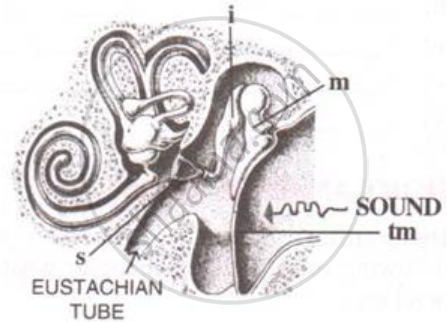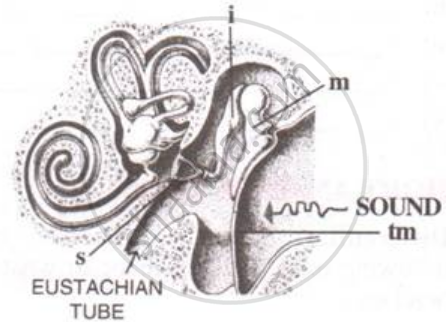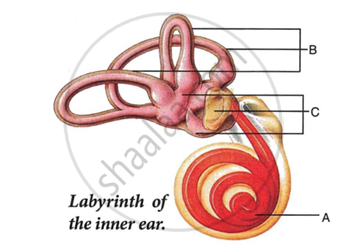Advertisements
Advertisements
प्रश्न
The figure below is the sectional view of a part of the skull showing a sense organ:

What are the parts labeled 'm', 'i' and 's'? What do these parts constitute collectively?
उत्तर
m - malleus, i - incus and s - stapes respectively. These are collectively called as ear ossicles.
APPEARS IN
संबंधित प्रश्न
Write short notes on the following: Cochlea
find odd one from following: Malleus, iris, Stapes, Incus.
State the exact location of the Ciliary body
State the main function of the Eustachian tube
Give scientific reasons: We cannot distinguish colours in moonlight.
Name the following:
The nerves which transmit impulse from ear to the brain.
Name the three ear ossicles.
The figure below is the sectional view of a part of the skull showing s sense organ:

Name the sense organ.
Given below is the diagram of a part of the human ear. Study the same and answer the questions that follow:
 |
Give the collective biological term for Malleus, locus and Stapes.
Draw a neat and labelled diagram of the human ear. With the help of this diagram, explain the construction and working of the human ear.
Given below is a diagram of a part of the human ear. Study the same and answer the question that follow:

Name the audio receptor region present in the part labeled 'A'.
Mention, if the following statement is True or False
Deafness is caused due to the rupturing of the pinna.
Select the CORRECT match of part of the human ear and its function.
The part of the ear that collects the sound from the surroundings is ______.
In the inner ear, the pressure variations are turned into electrical signals by the ______.
Vibrating particles travel all the way from the vibrating objects to the ear.
Categorise the following parts under (i) external, (ii) middle and (iii) internal ear.
Ear drum, hammer, pinna, cochlea, anvil, stirrup, eustachian tube, tympanum, oval window, semi-circular canals.
With reference to human ear answer the question that follow:
Name the part of the ear associated with Static balance.
Name the part of the inner ear that is responsible for static balance in human beings.
